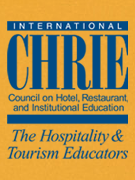Publication Date
2019
Executive Summary
A competitive tourism destination should generate tourism revenues. Defining and measuring competitiveness is crucial for a tourism destination, especially to appraise its performance compared to the competitors. The Travel and Tourism Competitiveness Index (TTCI) was developed by the World Economic Forum (WEF) in 2007 as the only tourism competitiveness indicator. The TTCI has been subjected to methodological criticism, such as the arbitrary weighing of variables. Underdeveloped countries are rated lower while the first-world countries are the highest rated tourism destinations in TTCI. Their ranking has been buoyed by their quality infrastructures, but not on tourist motivation to visit their diverse core tourism products that create tourism demand and generate tourism revenues. An empirical study was conducted on data from 115 nations. Secondary data on the competitiveness attributes were extracted from international reports. The causal relationship between the competitiveness attributes and TTCI ranking, together with tourism performance was tested through the variance-based structural equation modelling. Seven variables were identified as predictors to TDC: tourism core resources, complimentary conditions, infrastructure quality, destination management, environmental management, tourism price, and globalisation. The TTCI should weight tourism-related components more than non-tourism components to ensure a balanced approach. Moreover, the TTCI should consider the unique features of a destination in the ranking calculations. Only then TTCI ranking will be able to convey a more comprehensible and factual assessment, to guide decision-making related to tourism developments, investments, and other types of business decisions.
Recommended Citation
Hanafiah, Mohd Hafiz; Hemdi, Mohamad Abdullah; and Ahmad, Ismail
(2019)
"Does Ranking Explain Actual Performance? A Case of WEF Tourism Competitiveness Report,"
ICHRIE Research Reports: Vol. 4:
Iss.
1, Article 2.
DOI: 10.61701/410568.65
Available at:
https://via.library.depaul.edu/ichrie_rr/vol4/iss1/2


